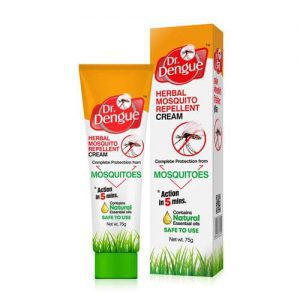Protecting Your Family: The Best Mosquito Creams for Children and Infants
Children and infants are particularly vulnerable to the dangers posed by mosquito-borne diseases. As their immune systems are still developing, they have a higher risk of falling ill and experiencing severe complications from mosquito bites. Therefore, it is crucial to take proactive measures to protect our little ones from these pesky insects. One of the most effective ways to safeguard their health is by utilizing mosquito creams specifically formulated for children.
Mosquito-Borne Diseases

Mosquito-borne diseases pose a significant threat to the health and well-being of children and infants. These tiny insects can transmit various harmful viruses and parasites, leading to severe illnesses and potentially life-threatening complications. In this section, we will explore common mosquito-borne diseases affecting children, the risks associated with them, and the pressing need for preventive measures to safeguard their health.
Common Mosquito-Borne Diseases Affecting Children and Infants:
Malaria:
- Describe malaria as a life-threatening disease caused by the Plasmodium parasite and transmitted through the bite of infected mosquitoes.
- Emphasize that children, especially those under five years of age, are particularly susceptible to malaria due to their weaker immune systems.
- Highlight the symptoms of malaria, such as high fever, chills, fatigue, vomiting, and anemia.
Dengue Fever:
- Explain dengue fever as a viral infection transmitted by the Aedes mosquito, primarily found in tropical and subtropical regions.
- Discuss how children and infants infected with dengue may experience symptoms like high fever, severe headache, joint and muscle pain, rash, and bleeding tendencies.
- Address the risk of developing dengue hemorrhagic fever or dengue shock syndrome, which can be life-threatening.
Zika Virus:
- Provide an overview of the Zika virus and its transmission through the bite of infected Aedes mosquitoes.
- Discuss the potential risks for infants, including the link between Zika virus infection during pregnancy and microcephaly (a birth defect resulting in a smaller head size and potential developmental issues).
- Highlight the symptoms of Zika virus infection, such as mild fever, rash, conjunctivitis, joint pain, and muscle pain.
Risks Associated with These Diseases:
Health complications:
Explain that mosquito-borne diseases can lead to various health complications, including organ damage, neurological issues, anemia, and respiratory problems.
Discuss the potential long-term effects on cognitive development and physical growth, especially in cases of severe infections.
Impact on daily life:
Address how mosquito-borne diseases can disrupt a child’s daily routine, including missed school days, reduced physical activity, and limitations on social interactions.
Highlight the emotional and psychological impact on both the child and their family, including stress and anxiety associated with the illness.
Need for Preventive Measures:
Importance of prevention:
- Stress the significance of preventing mosquito bites to reduce the risk of mosquito-borne diseases.
- Explain that prevention is especially crucial in regions with a high prevalence of these diseases or during outbreaks.
Effective preventive measures:
- Encourage the use of mosquito repellents, such as creams specifically formulated for children, as a primary defense against mosquito bites.
- Advocate for protective clothing, such as long sleeves, pants, and socks, to minimize exposed skin.
- Promote the use of mosquito nets, both during sleep and for strollers or play areas outdoors.
- Emphasize the need to eliminate mosquito breeding sites, such as stagnant water, around the child’s living environment.
Factors to Consider When Choosing Mosquito Creams
Selecting the right mosquito cream for children and infants is crucial to ensure their safety and provide effective protection against mosquito bites. Several factors need to be considered when choosing these creams, including safety considerations, effectiveness, ingredients, allergy concerns, and ease of application and absorption. By taking these factors into account, parents and caregivers can make informed decisions and provide optimal mosquito bite prevention for their little ones.
Safety Considerations for Children and Infants:
Age-appropriate formulations:
- Emphasize the importance of selecting mosquito creams specifically formulated for children and infants.
- Highlight that these formulations are usually designed with lower concentrations of active ingredients to ensure safety for young ones.
FDA-approved products:
- Encourage the use of mosquito creams that are approved by reputable regulatory bodies, such as the U.S. Food and Drug Administration (FDA).
- Mention that FDA-approved products undergo rigorous testing to ensure their safety and efficacy.
Potential side effects:
- Discuss common side effects associated with mosquito creams, such as skin irritation or allergic reactions.
- Encourage parents and caregivers to perform a patch test before widespread use and
- discontinue use if any adverse reactions occur.
Effectiveness Against Mosquito Bites:
Repellent efficacy:
- Recommend choosing mosquito creams that have been clinically proven to effectively repel mosquitoes.
- Look for products with active ingredients like DEET (N,N-diethyl-meta-toluamide) or picaridin, which are known to be highly effective against mosquitoes.
Duration of protection:
- Consider mosquito creams that provide long-lasting protection to minimize the need for frequent reapplication.
- Look for products that offer protection for several hours, especially during peak mosquito activity times.
Ingredients to Look For and Avoid:
Active ingredients:
- Provide information on commonly used active ingredients in mosquito creams, such as DEET, picaridin, or natural plant-based extracts like lemon eucalyptus oil.
- Discuss the effectiveness and safety profiles of these ingredients.
Ingredients to avoid:
- Advise against using mosquito creams that contain harmful chemicals or ingredients that may be unsafe for children and infants.
- Caution against products containing high concentrations of DEET or other potentially harsh chemicals.
Allergy Concerns and Hypoallergenic Options:
Hypoallergenic formulations:
- Highlight the availability of hypoallergenic mosquito creams specifically formulated for sensitive skin.
- These creams are designed to minimize the risk of allergic reactions, making them suitable for children and infants with delicate skin.
Patch testing:
- Encourage parents and caregivers to conduct a patch test on a small area of the child’s skin before using a new mosquito cream.
- This helps identify any potential allergies or sensitivities to the product.
Additional Tips for Mosquito Protection
In addition to using mosquito creams, there are several additional measures that parents and caregivers can take to enhance mosquito protection for children and infants. By implementing these strategies, we can further minimize their exposure to mosquitoes and create a safer environment for them to thrive in.
Limiting Mosquito Exposure During Peak Activity Times:
Peak mosquito activity:
- Educate parents and caregivers about the peak activity times of mosquitoes, typically dawn and dusk.
- Encourage scheduling outdoor activities accordingly to minimize exposure during these times.
Protective measures:
- Advise using mosquito creams, wearing appropriate clothing, and utilizing mosquito nets during peak activity times.
- Suggest alternative indoor activities during high mosquito activity periods to reduce the risk of bites.
Proper Clothing Choices for Children and Infants:
Long sleeves and pants:
- Recommend dressing children and infants in lightweight, long-sleeved shirts, long pants, and socks when spending time outdoors.
- This clothing provides an additional physical barrier against mosquito bites.
Light-colored clothing:
- Suggest choosing light-colored clothing as mosquitoes are attracted to darker colors.
- Light-colored clothes can help deter mosquitoes and make it easier to spot them on clothing surfaces.
Creating a Mosquito-Free Environment at Home:
Remove standing water:
- Highlight the importance of eliminating stagnant water sources, such as buckets, flowerpots, and birdbaths, as they serve as breeding grounds for mosquitoes.
- Encourage regular inspection and emptying of water containers to prevent mosquito reproduction.
Maintain screens and seal openings:
- Emphasize the need for intact window screens and doors with tight seals to prevent mosquitoes from entering the home.
- Advise parents and caregivers to repair or replace damaged screens and seal any gaps or openings where mosquitoes could enter.
Use mosquito-repelling plants:
- Suggest incorporating mosquito-repelling plants, such as citronella, lavender, or basil, in outdoor areas.
- These plants emit natural fragrances that repel mosquitoes and can contribute to a mosquito-free environment.
Conclusion
Protecting children and infants from mosquito bites is of utmost importance to ensure their health and well-being. Mosquito-borne diseases pose a significant risk to their vulnerable immune systems, and the discomfort caused by mosquito bites can disrupt their daily lives. By taking proactive measures, parents and caregivers can create a safe environment and minimize the chances of mosquito-borne illnesses.Alongside the use of mosquito creams, taking additional precautions can further enhance mosquito protection. Limiting exposure during peak activity times, dressing children and infants in appropriate clothing, creating a mosquito-free environment at home, and utilizing mosquito nets and screens are all valuable measures to consider.
In conclusion, protecting children and infants from mosquito bites is a responsibility that should not be overlooked. By using the best mosquito creams, implementing preventive measures, and creating a safe environment, we can ensure the well-being of our little ones. Let us take the necessary precautions to safeguard their health and provide them with the opportunity to grow and thrive without the risks associated with mosquito-borne diseases.




